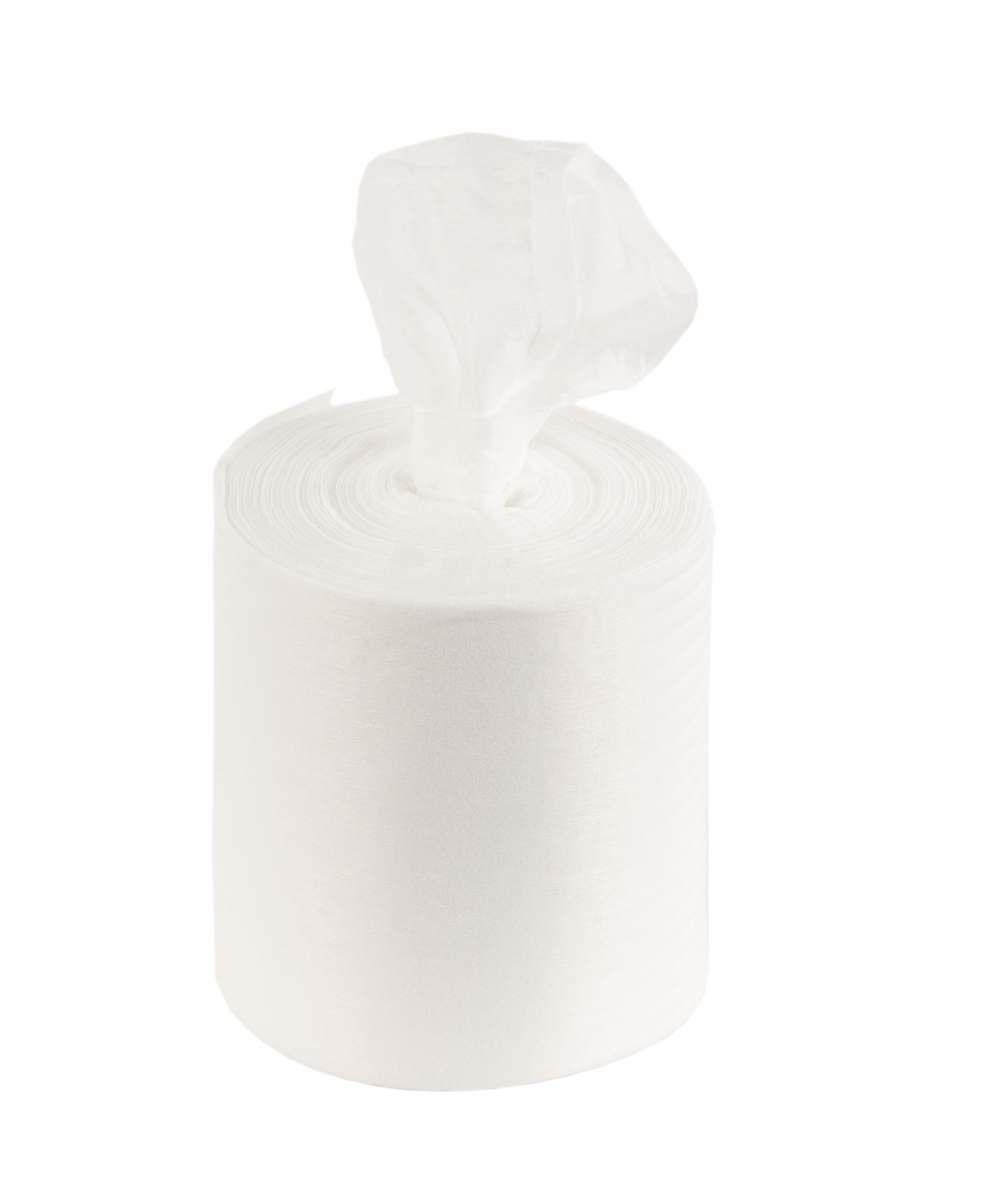Frohnradstraße 2
63768 Hösbach
Tel.+49 (0) 6021 62998-100
Fax +49 (0) 6021 62998-99
The right disinfectants protect against pathogens
There are many agents and solutions for disinfection, but it is not always immediately clear to every user whether there is automatically sufficient protection against infection by smear, currently for example against the Corona virus, Covid-19. In nursing professions, the best possible protection is ordered by default; in drugstores and supermarkets, limited-acting disinfectants can often be found, but these also make sense in terms of application.
Filter products

Refill roll for dispenser bucket for disinfecting surfaces The roll is suitable for cost-effective refilling of the dispenser bucket. You can choose between 200 or 400 sheets of non-woven wipes divided by perforation. Soaked in a dispenser bucket with surface disinfectant or cleaning agent, they are used for quick and uncomplicated disinfection or cleaning of surfaces. When soaked in disinfectant, the sheets have a particularly high cleaning power and are pleasantly soft to the touch. Advantages: Can be impregnated with disinfectant or cleaning agent as required Almost residue-free and aldehyde-free Can be used in the liquid for up to 4 weeks Up to 70 % less waste and up to 30 % cost savings (one wipe per unit is sufficient) Application: Place roll in an existing dispenser bucket. Fill the dispenser bucket with approx. 1100 ml of commercially available disinfectant or detergent and allow to swell for approx. 30 to 60 minutes. The non-woven wipes are now ready for use. The constant closing of the container in which your fleece wipes are located prevents the evaporation of the agent contained. Product details Cleaning roll: Quality: soft Quantity: 200 or 400 sheets per roll Made of tear-resistant, lint-free non-woven fabric
Overview of the differences in disinfectants
Disinfectants are used to reduce the germ load. This is of course particularly important in hospitals and medical practices. Wherever many people come together, such as in the catering trade, at least daily surface cleaning is also useful. At home or in other ordinary environments, however, you will never achieve freedom from germs, and that is not desirable at all. For one thing, the immune system needs a certain basic level of germs in order not to go crazy. For another, bacteria, for example, multiply so quickly that a germ-free environment can only be maintained for a very short time. Finally, disinfectants in bulk are also a burden on the environment, as they also end up in wastewater and as well as in the environment. The Corona virus outbreak has caused the demand for disinfectants to skyrocket. This overview will help you make your own decisions.
Disinfectants for hands and skin
Clean hands are essential for maintaining hygienic standards. Hands are germ magnets per se, because we constantly touch doors, tables, cutlery, lift buttons and of course ourselves and other people with them. In times when flu, norovirus or even Covid-19 are on the increase, clean hands are the first thing to look out for. Hand disinfectants come in handy, because they are gentle on the skin and this is important, after all, we don't want to cast out the devil with the Beelzebub. Hand disinfectants are available in liquid form, as gels or as hand disinfectant wipes. However, not all of them are effective against viruses. It is therefore worth looking at the label. Bactericidal is effective against bacteria, fungicidal against fungi and virucidal is also effective against viruses. When washing your hands, it is always important to clean them thoroughly, including the spaces between your fingers.
Disinfectant for surfaces and areas
Hygienically clean surfaces, floors and other surfaces can be achieved with surface disinfectant cleaners. These are mainly used professionally in hospitals, nursing homes and in trade. They are somewhat more aggressive than hand disinfectants and are usually effective against bacteria, viruses, and fungi from the outset. However, it is important to consult the label to be sure. They are usually applied using spray bottles. The spray must soak in for a few minutes and can then be wiped away wet. Surface disinfectant cleaners are usually suitable for surfaces of all kinds. However, special materials such as leather should be approached with caution. It is best to test the respective cleaner on a small inconspicuous area first before using it on a large scale for sensitive surfaces. Disinfectant wipes are also often used to disinfect instruments and equipment.
Disinfecting linen, bed linen and other textiles
Viruses and bacteria are sensitive to heat, and this makes disinfecting textiles relatively easy - at least for most textiles. If they are suitable for washing in a washing machine and can be washed at 60°, then just one wash cycle at this temperature is enough to send viruses and most bacteria into the microcosmic beyond. Sensitive textiles that can't withstand 60° are a bit more difficult. The iron is one idea to prevent viruses from drying after the wash cycle. Another possibility is to pour almost boiling water over the textiles by hand and then leave them immersed in the hot water until the water has cooled down again. Another possibility is to add disinfectant powder to the wash cycle or to spray the laundry with a suitable disinfectant beforehand.
